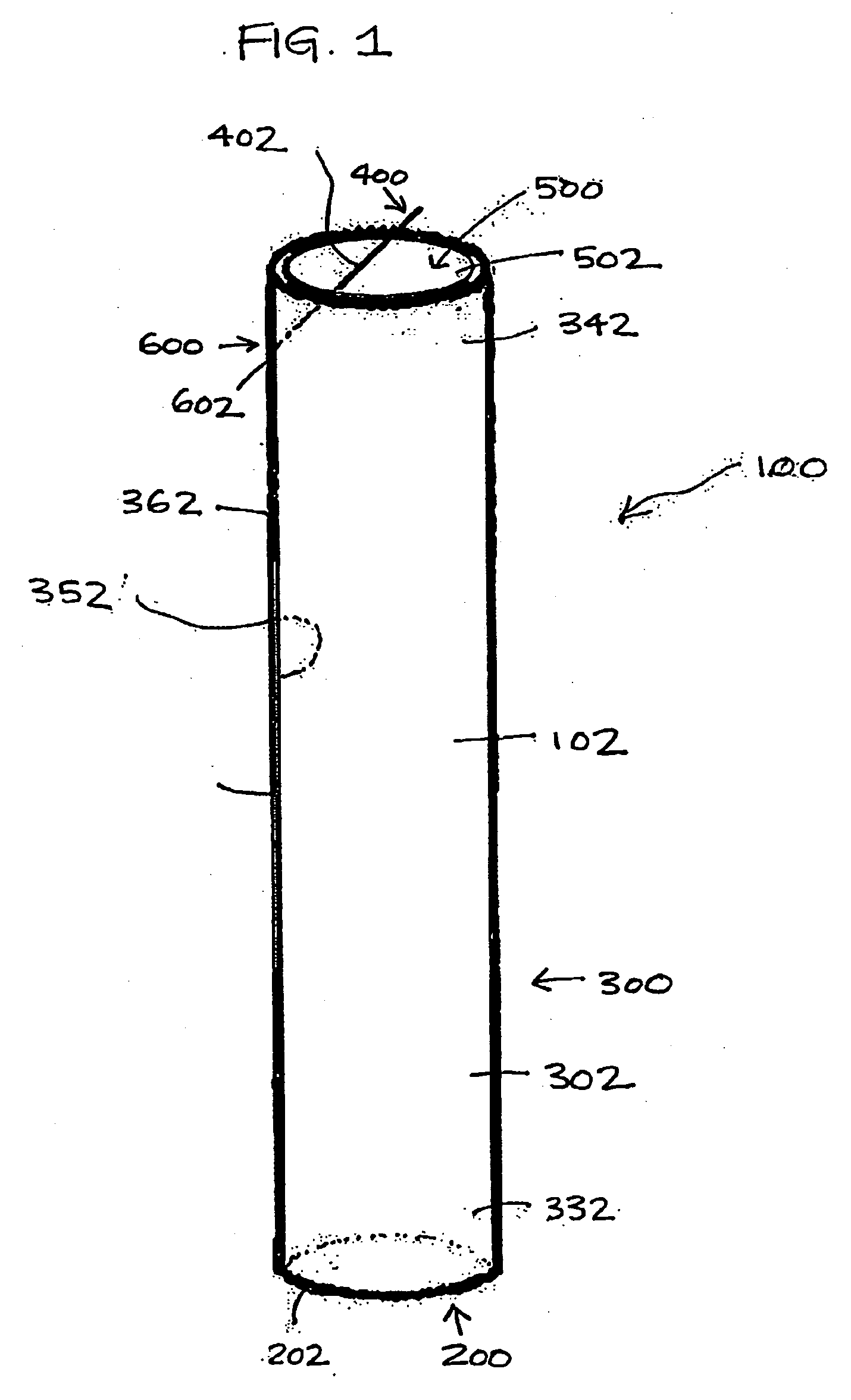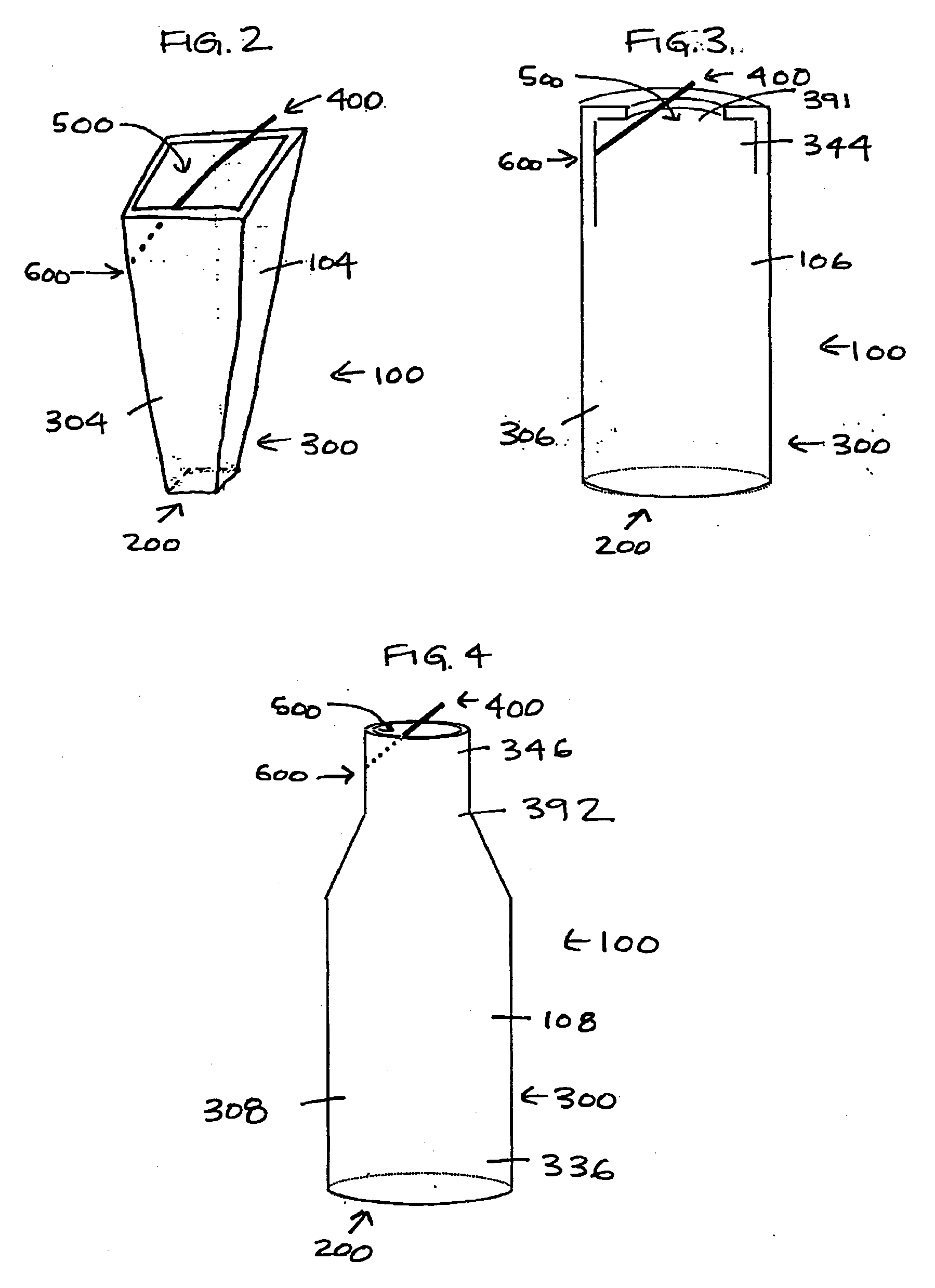Cerebrospinal fluid collection tubes and methods
a collection tube and cerebrospinal fluid technology, applied in the field of medical devices, can solve the problems of csf droplets being missed, exacerbated unpredictability of csf drop formation, and procedure can be made more difficult, so as to reduce the risks of spinal tap procedures, increase the predictability of csf collection, and efficient procedure of csf collection
- Summary
- Abstract
- Description
- Claims
- Application Information
AI Technical Summary
Benefits of technology
Problems solved by technology
Method used
Image
Examples
Embodiment Construction
[0056]The present invention relates to a CSF collection tube. As shown generally in FIG. 1, the CSF collection tube 100 includes a bottom end portion 200 integrally connected to a tubular sidewall portion 300. The CSF collection tube 100 further includes a filament element 400 that projects through an open end portion 500 of the CSF collection tube 100, and is attached to the CSF collection tube by an attachment element 600.
[0057]As shown more specifically in FIG. 1, one embodiment of a CSF collection tube 102 includes a circular bottom end portion 202 and a circular cross-sectional tubular sidewall portion 302. Tubular sidewall portion 302 has first end 332 and second end 342 as well as an interior surface 352 and an exterior surface 362. The first end 332 of the tubular sidewall portion 302 is sealed to bottom end portion 202 of CSF collection tube 102. The second end 342 of the tubular sidewall portion 302 defines a circular open end portion 502.
[0058]In the embodiment illustrate...
PUM
 Login to View More
Login to View More Abstract
Description
Claims
Application Information
 Login to View More
Login to View More - R&D
- Intellectual Property
- Life Sciences
- Materials
- Tech Scout
- Unparalleled Data Quality
- Higher Quality Content
- 60% Fewer Hallucinations
Browse by: Latest US Patents, China's latest patents, Technical Efficacy Thesaurus, Application Domain, Technology Topic, Popular Technical Reports.
© 2025 PatSnap. All rights reserved.Legal|Privacy policy|Modern Slavery Act Transparency Statement|Sitemap|About US| Contact US: help@patsnap.com



